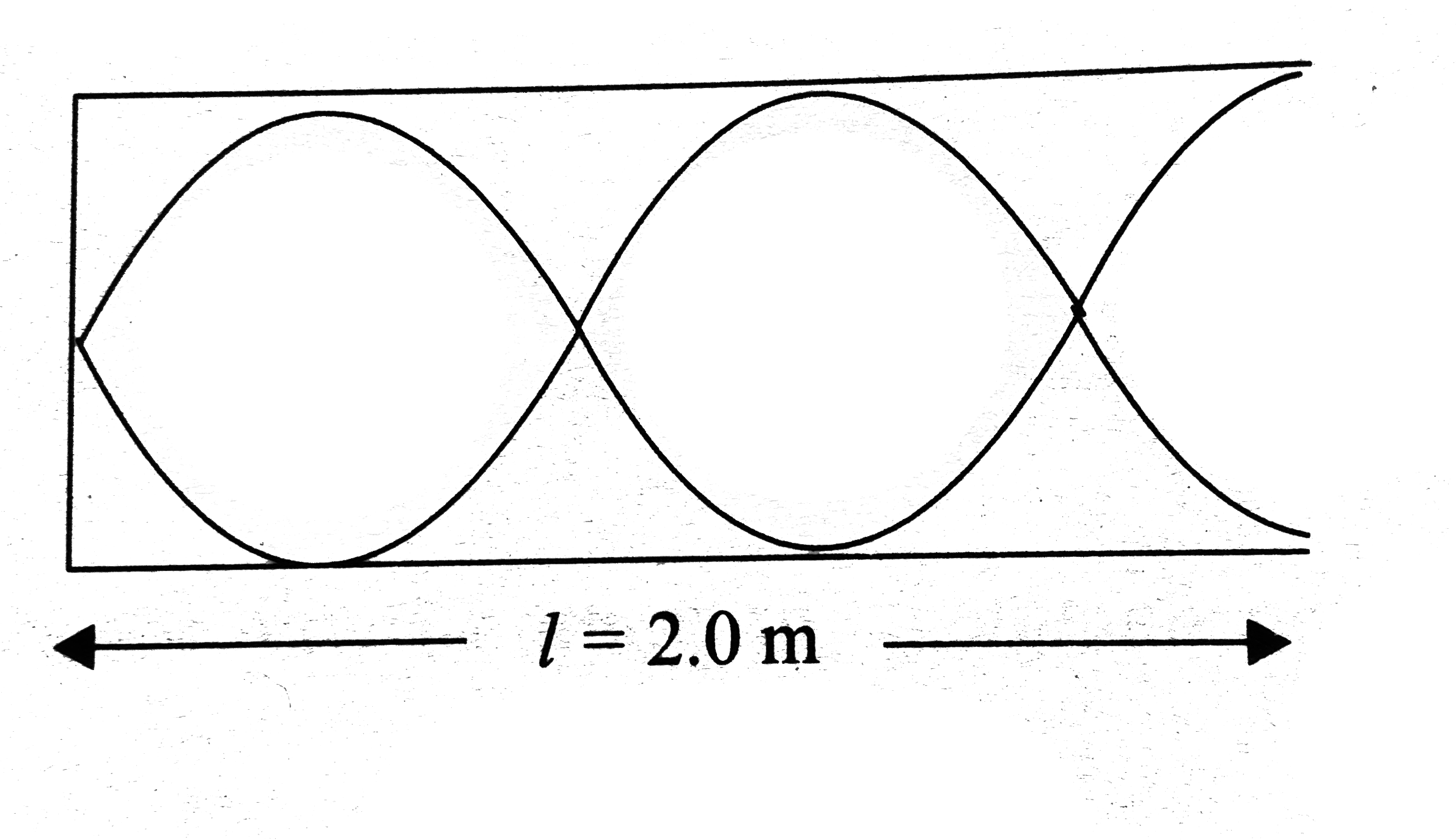Two identical sinusoidal waves travel in opposite direction in a wire long and produce a standing wave in the wire . If the speed of the wave is and there are nodes in the standing wave . Find the frequency .
The correct Answer is:
To find the frequency of the standing wave produced by two identical sinusoidal waves traveling in opposite directions in a wire, we can follow these steps:
Step 1: Understand the relationship between nodes and wavelength
In a standing wave, the distance between two consecutive nodes is half the wavelength (λ/2). If there are 6 nodes, we can determine the number of half-wavelengths in the wire.
Step 2: Calculate the number of half-wavelengths
The number of segments between nodes is one less than the number of nodes. Therefore, for 6 nodes, there are 5 segments:
- Number of half-wavelengths = 5
Step 3: Relate the total length of the wire to the wavelength
The total length (L) of the wire is given as 15 m. Since there are 5 half-wavelengths in this length, we can express the total length as:
L=5λ2
This means:
15=5λ2
Step 4: Solve for the wavelength (λ)
To find the wavelength, rearrange the equation:
λ=2L5
Substituting the value of L:
λ=2×155=305=6 m
Step 5: Use the wave speed to find the frequency
The speed (v) of the wave is given as 12 m/s. The relationship between speed (v), frequency (f), and wavelength (λ) is given by:
v=f⋅λ
Rearranging this gives:
f=vλ
Step 6: Substitute the values to find frequency
Now, substituting the known values:
f=12 m/s6 m=2 Hz
Conclusion
The frequency of the standing wave is 2 Hz.
---
In a standing wave, the distance between two consecutive nodes is half the wavelength (λ/2). If there are 6 nodes, we can determine the number of half-wavelengths in the wire.
The number of segments between nodes is one less than the number of nodes. Therefore, for 6 nodes, there are 5 segments:
- Number of half-wavelengths = 5
The total length (L) of the wire is given as 15 m. Since there are 5 half-wavelengths in this length, we can express the total length as:
L=5λ2
This means:
15=5λ2
To find the wavelength, rearrange the equation:
λ=2L5
Substituting the value of L:
λ=2×155=305=6 m
The speed (v) of the wave is given as 12 m/s. The relationship between speed (v), frequency (f), and wavelength (λ) is given by:
v=f⋅λ
Rearranging this gives:
f=vλ
Now, substituting the known values:
f=12 m/s6 m=2 Hz
The frequency of the standing wave is 2 Hz.
Topper's Solved these Questions
- BOOK - CENGAGE PHYSICS ENGLISHCHAPTER - SUPERPOSITION AND STANDING WAVESEXERCISE - Single Correct Answer Type56videos
SUPERPOSITION AND STANDING WAVES
- BOOK - CENGAGE PHYSICS ENGLISHCHAPTER - SUPERPOSITION AND STANDING WAVESEXERCISE - Multiple Correct Answers Type5videos
SUPERPOSITION AND STANDING WAVES
- BOOK - CENGAGE PHYSICS ENGLISHCHAPTER - SUPERPOSITION AND STANDING WAVESEXERCISE - Comprehension55videos
SUPERPOSITION AND STANDING WAVES
- BOOK - CENGAGE PHYSICS ENGLISHCHAPTER - SOUND WAVES AND DOPPLER EFFECTEXERCISE - Integer16videos
SOUND WAVES AND DOPPLER EFFECT
- BOOK - CENGAGE PHYSICS ENGLISHCHAPTER - THERMODYNAMICSEXERCISE - 241videos
THERMODYNAMICS
Similar Questions
In a standing wave, node is a point of
View SolutionStanding waves can be produced
View SolutionStanding waves can be produced
View SolutionTwo sinusoidal waves travelling in opposite directions interfere to produce a standing wave described by the equation y=(1.5)msin(0.200x)cos(100t), where x is in metres and t is in seconds. Determine the wavelength, frequency and speed of the interfering waves.
View SolutionTwo sinusoidal waves travelling in opposite directions interfere to produce a standing wave described by the equation
y=(1.5m)sin(0.400x)cos(200t)
where, x is in meters and t is in seconds. Determine the wavelength, frequency and speed of the interfering waves.View SolutionThe standing wave pattern shown in the tube has a wave speed of 5.0ms−1. What is the frequency of the standing wave [ in Hz approx.] ?
 View Solution
View SolutionOcean waves of time period 10 s have wave velocity 15 ms−1. Find the wavelength of these waves .
View SolutionThe distance between any two adjacent nodes in a stationary wave is 15 cm. if the speed of the wave is 294 ms/, what is its frequency?
View SolutionTwo waves travelling in opposite directions produce a standing wave . The individual wave functions are given by y1=4sin(3x−2t) and y2=4sin(3x+2t)cm , where x and y are in cm
View SolutionTwo waves travelling in opposite directions produce a standing wave . The individual wave functions are given by y1=4sin(3x−2t) and y2=4sin(3x+2t)cm , where x and y are in cm
View Solution

